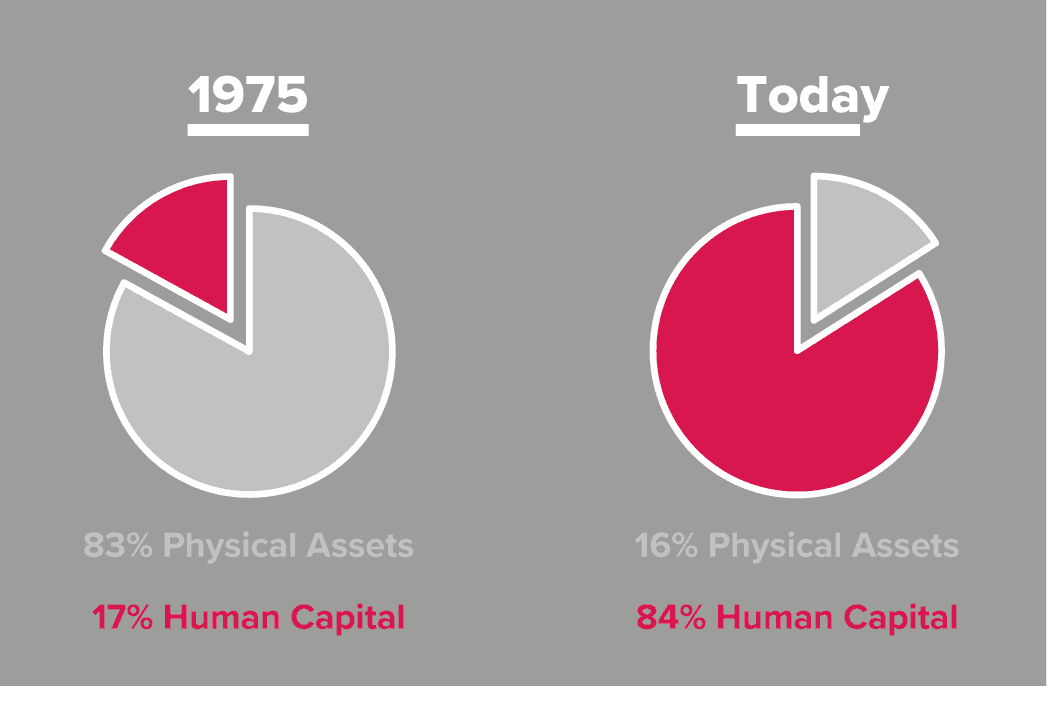The transformation of employee development—and the changes coming next
What’s in store for career growth and upskilling in the new world of work?

Today, businesses aren’t afraid to invest in talent development & talent development tools. Now that skills rank as HR leaders’ top priority and hiring competition is more intense than ever, executives are going the extra mile to help their workforces prepare for their next chapter.
It hasn’t always been this way. Even a decade ago, learning and development (L&D) was an afterthought at some organizations. It was typically done entirely face-to-face and often reserved for subsections of the workforce viewed as high-potential.
In recent years, digital innovation has revolutionized the employee development landscape. Rather than relying on one-size-fits-all training, tech-enabled solutions empower leaders to launch L&D initiatives that align with their employees’ ambitions and their business needs. On the heels of announcing Opportunity Hub, a new milestone in digitally-driven employee development, we’re taking a look back at where these initiatives started and previewing what we can expect next.
The early days of employee development and corporate learning
Employee learning programs for career growth are nothing new. Yet, today’s version is barely recognizable when compared to earlier predecessors. The origins of L&D go as far back as the late nineteenth century when executives started to improve factory conditions and build company libraries as part of early corporate welfare programs. A few decades later, Ford debuted one of the first employee learning programs, which offered classes in personal finance, English, homemaking, and hygiene.
Fast forward 60 years, and it was Motorola that ushered in the next generation of employee development. After their then-CEO decided all employees needed to learn new skills, the enterprise established Motorola University. Workers were expected to study basic literacy and math, and those that resisted risked being let go.
It wasn’t until the early 2000s that tech-enabled employee development started gaining momentum. Learning Management Systems (LMS) delivered training digitally, in turn reaching thousands of people in a way that brick and mortar universities never could. Yet, unlike today’s platforms, early LMS options were static and they lacked adaptive curricula. That meant that content was standardized and created for the masses, with virtually no room for personalization or customization.
Where is employee development today?
Tech-enabled employee development has come a long way in a short time. The rise of the LMS paved the way for the next generation of digital learning, known as Learning Experience Platforms (LXPs). The key differentiator between the two is that LXPs are designed to put learning in the hands of the learner, rather than the administrator. The closed platform approach associated with the traditional LMS has been replaced by an open system that pulls from a wide variety of formats to create individualized learning experiences.
LXPs are undoubtedly a game-changer for employee development. With an LMS, the scope of learning was limited to the curriculum that management selected. There was little room for employees to bring their own interests and ambitions into what they were reading and tailor their coursework accordingly. In contrast, the LXP puts employees at the helm of their development. Users can create, curate, and aggregate content and receive personalized suggestions based on recent activity.
The evolution of the LXP is part of a larger shift towards a more holistic approach to employee development. While earlier strategies often focused solely on content and coursework, modern initiatives are grounded in a broader perspective that includes volunteering, coaching, and wellbeing. Today, top-tier employee development programs empower workers to not only learn, but to also put lessons into practice through experiential learning opportunities such as projects, gigs, and mentorships.
Unifying employee development and experience
Tech-enabled employee development is a huge win for workers and workforces. Employees get access to a broad array of resources that align with their career goals, while businesses benefit from the uptick in engagement and retention that goes hand-in-hand with this personalized approach.
However, these innovations have given rise to a new challenge: application overload. Industry analyst Josh Bersin estimates that companies are now using an average of 70 different employee tools and applications. An abundance of learning touchpoints overwhelms employees, resulting in low platform engagement rates and, ultimately, dollars wasted.
It was this disparate environment that inspired us to create Opportunity Hub, a single destination that integrates coaching, learning, volunteering, wellbeing, and more, all into the talent marketplace. We tapped into our network of best-in-breed partners to build this ecosystem, which gives employees easy access to the development opportunities they’re looking for in one place.
Why experiential learning is the future of employee development
In the new world of work, no employee development program can rely on learning content alone. As the half-life of skills shrinks and the pace of innovation accelerates, coursework must be paired with experiential learning so employees can efficiently upskill and prepare for the future of work.
That’s why a unified and personalized destination for employee development like Opportunity Hub is so powerful. Users can consume learning content from top-tier LXP providers and put these lessons into practice by finding relevant projects and gigs through their talent marketplace. They can also use the platform to help them identify their long-term career goals, explore the steps they will need to take to achieve them, and even pinpoint the skills gaps that are holding them back. With Opportunity Hub, it’s possible to access all of this information from one centralized location and benefit from learning and development opportunities from vendors who are truly the best of the best.
Now that every leader has their sights set on skills, employee development has firmly secured its status as a top priority.




